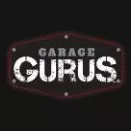-
Welcome to Auto Parts Forum
Whether you are a veteran automotive parts guru or just someone looking for some quick auto parts advice, register today and start a new topic in our forum. Registration is free and you can even sign up with social network platforms such as Facebook, X, and LinkedIn.
#AskAGuru: Chrysler Cylinder Head Casting Number
-
Similar Topics
-
By OReilly Auto Parts
SPRINGFIELD, Mo., March 13, 2025 (GLOBE NEWSWIRE) -- O’Reilly Automotive, Inc. (the “Company” or “O’Reilly”) (Nasdaq: ORLY), a leading retailer in the automotive aftermarket industry, today announced that its Board of Directors (the “Board”) approved a 15-for-1 split of its common stock, to be effected in the form of a one-time special stock dividend.
link hidden, please login to view -
By Dorman Products
Highlighted Part: Sliding Door Handle Repair Kit for Select Chrysler and Dodge Models
-
By jeffb
I'm looking for the part number, or some way to the the main engine wire harness for a 2006 Buick Lucerne. I've had difficulty finding this and wonder if anybody can help me.
Thanks.
-




Recommended Posts
Join the conversation
You can post now and register later. If you have an account, sign in now to post with your account.
Note: Your post will require moderator approval before it will be visible.